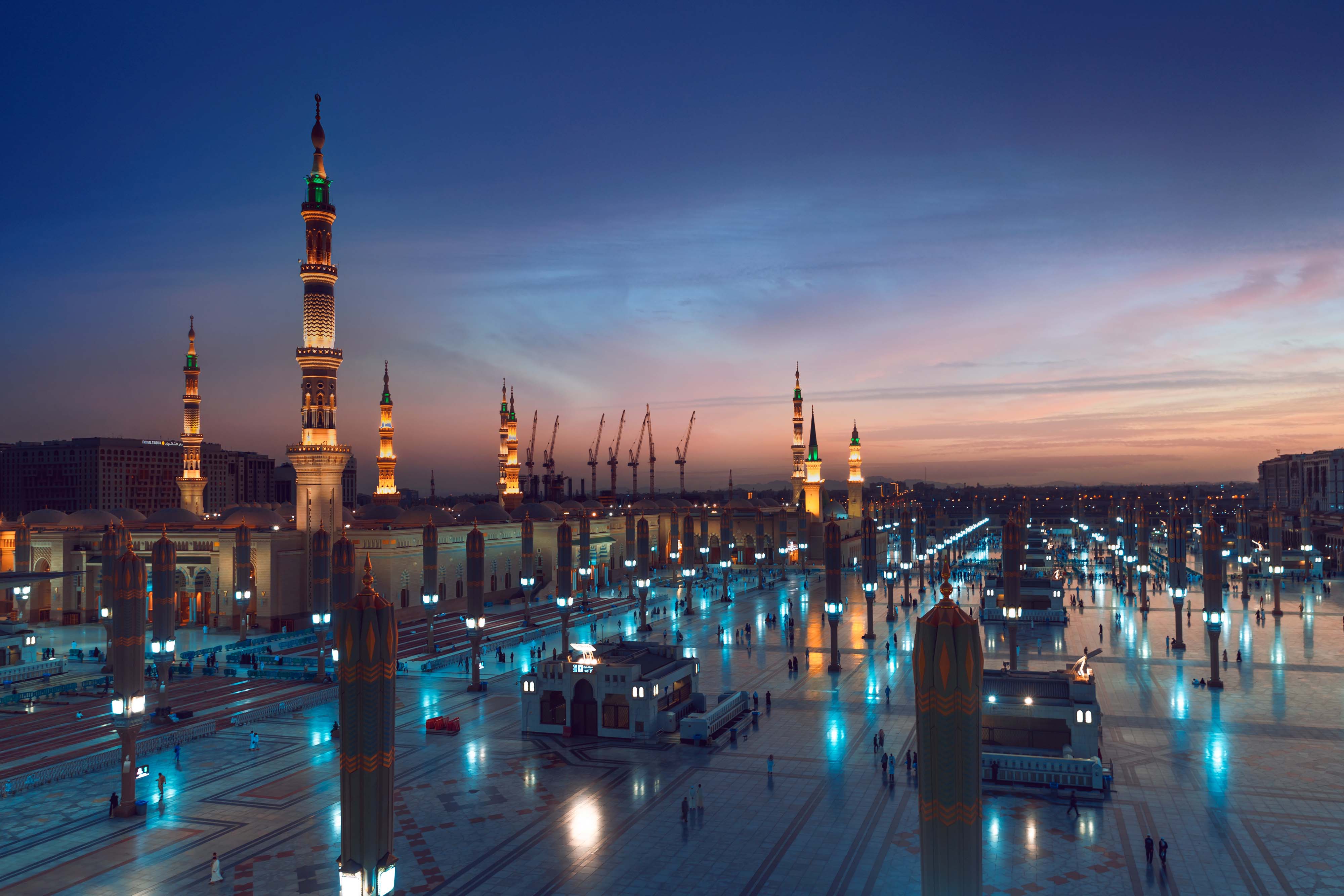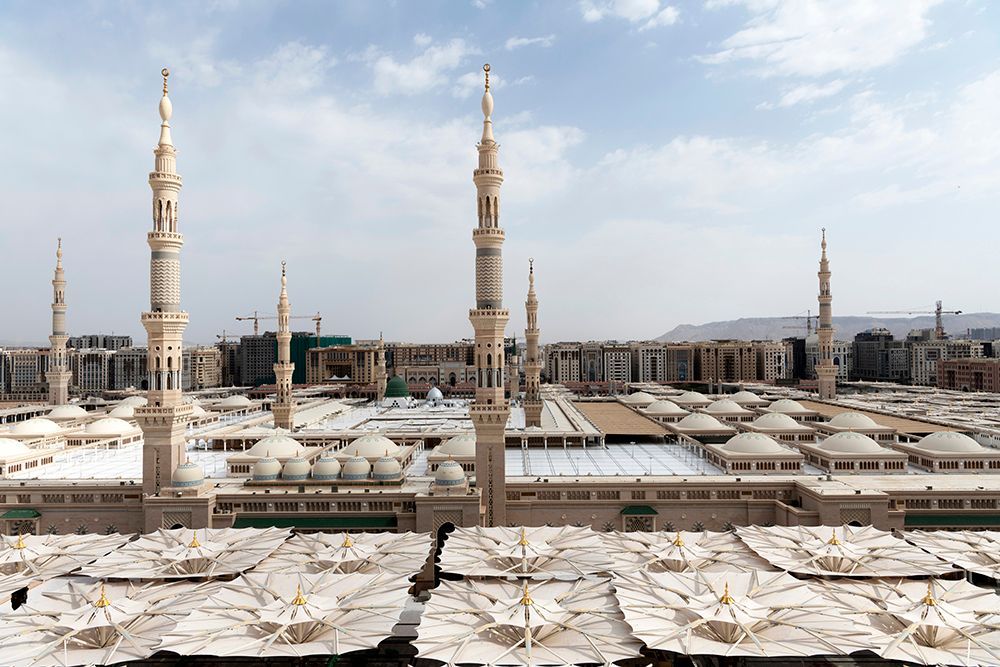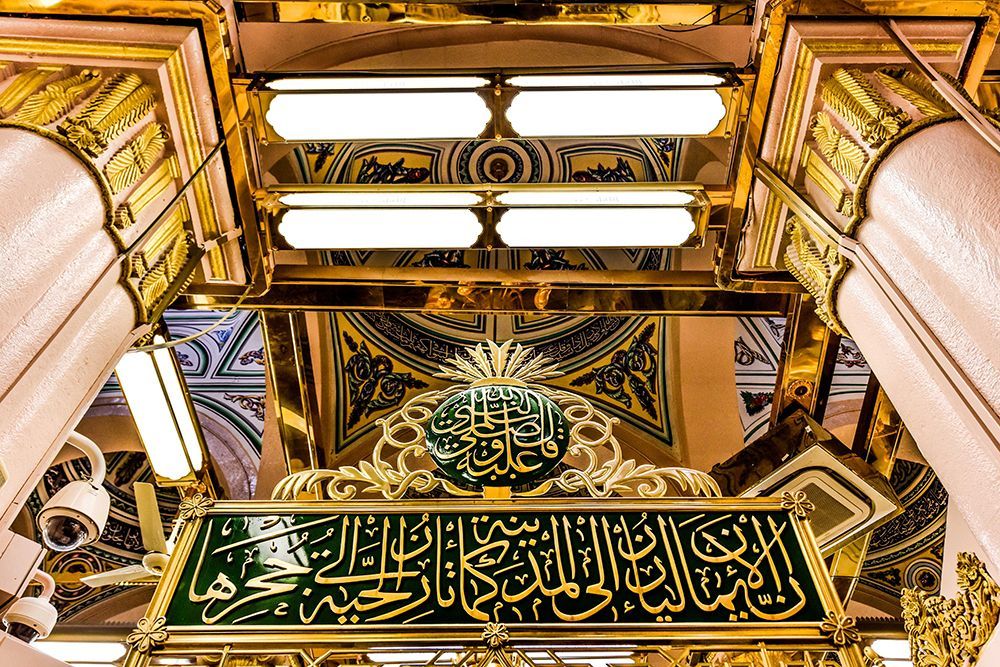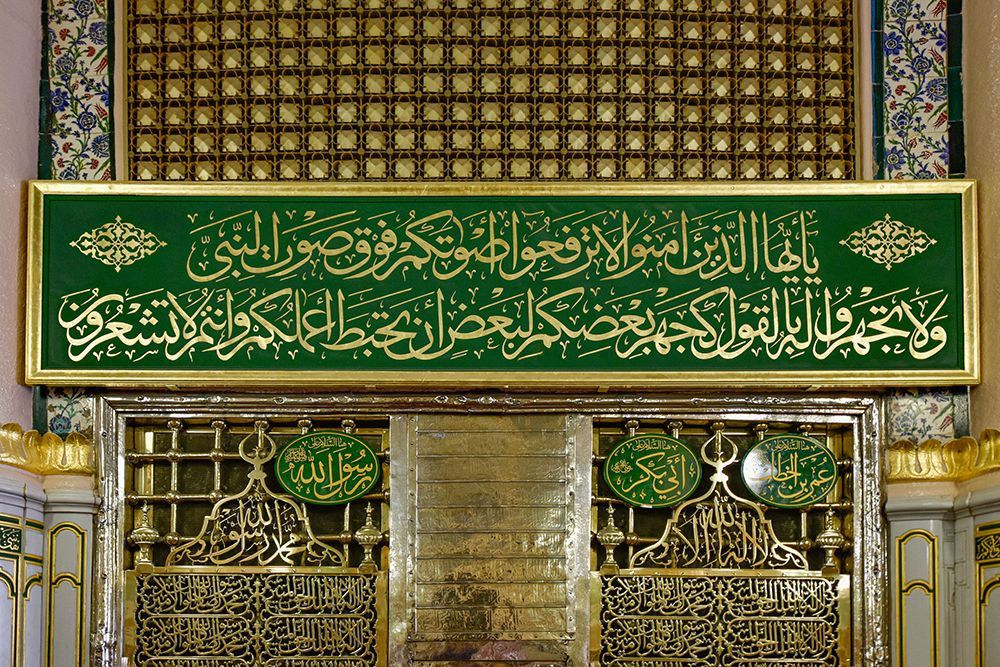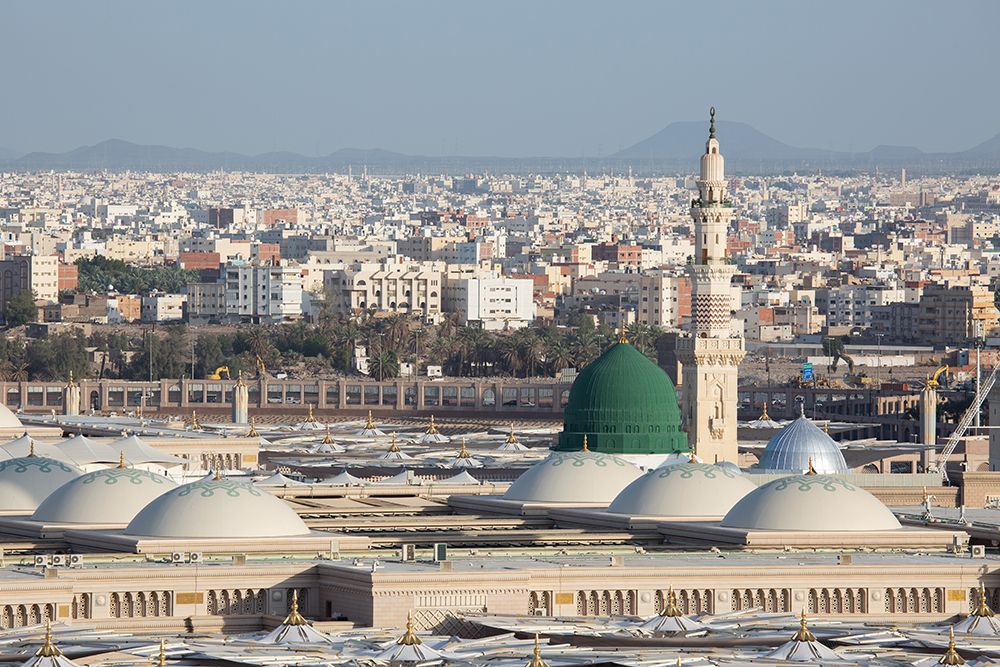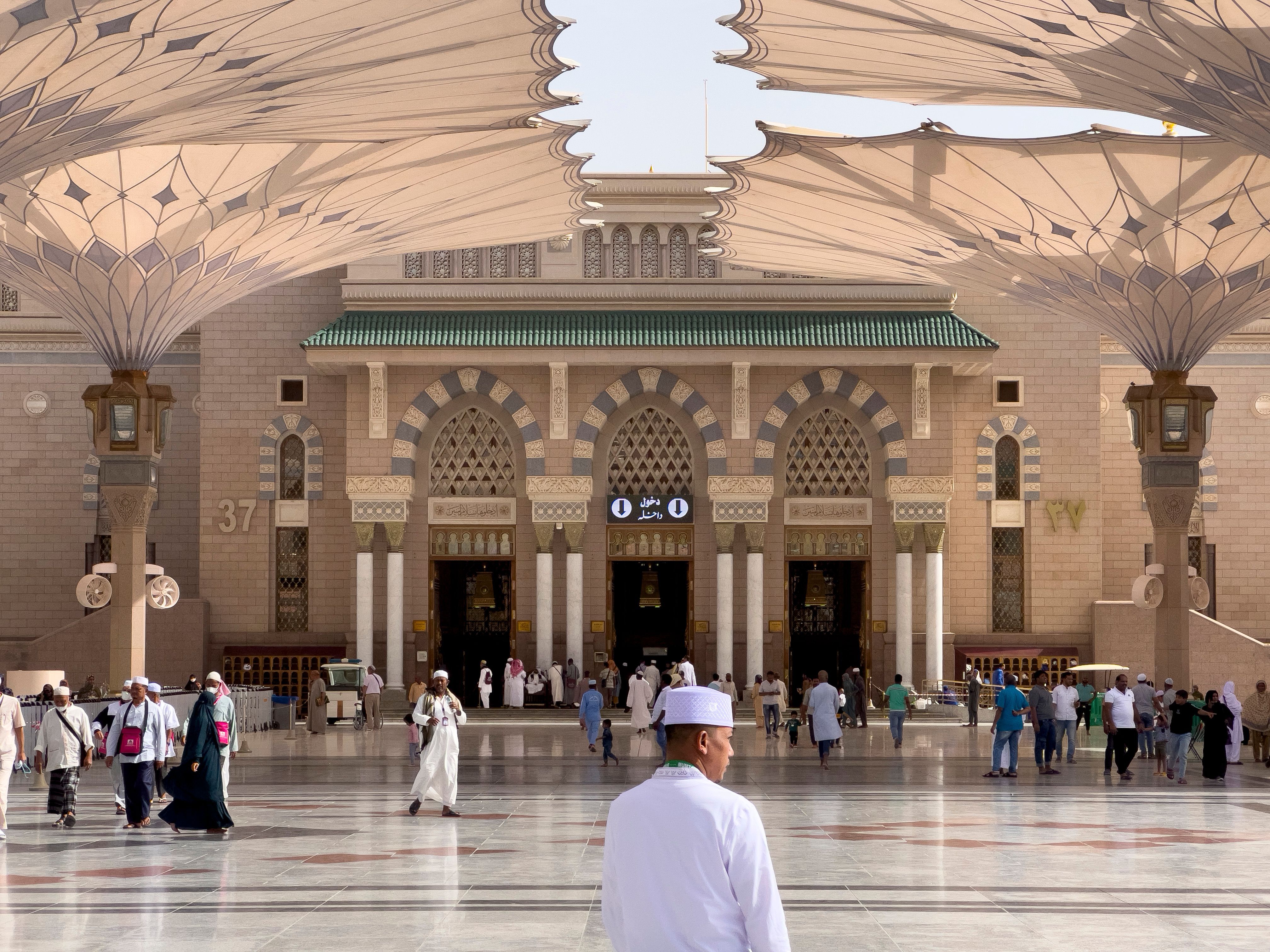The Prophet’s Mosque has a long history of construction that
began
during the time of the Prophet himself, blessings and peace be
upon
him, and during the period of his honorable companions, may
Allah be
pleased with them. Muslim rulers successively expanded and cared
for
the mosque following the example of the Messenger, blessings and
peace be upon him. The Prophet’s Mosque consists of:
The Old Mosque: It is the mosque where the
Prophet,
blessings and peace be upon him, prayed. Today, domes decorated
with
Quranic verses are erected over it, and its pillars are topped
with
golden crowns.
Gravel-covered areas: These are two open areas
immediately after the old mosque. They were previously covered
with gravel.
The Honorable Rawdah: The honorable Rawdah is
part of the Prophet’s Mosque. It is located at the front of the
mosque and extends from the house of the Messenger of Allah,
blessings and peace be upon him, (the honorable burial chamber)
to his pulpit.
Expansions: The Prophet's Mosque was expanded
more than once by the kings of Saudi Arabia. Expansions comprise
the other mosque buildings surrounding the gravel-covered areas.
Women's Prayer halls: There are two large prayer
areas for women; namely, the western and northern prayer halls.
Outer Courtyards: These are large prayer areas,
covered with canopies to protect worshipers from the sun.
